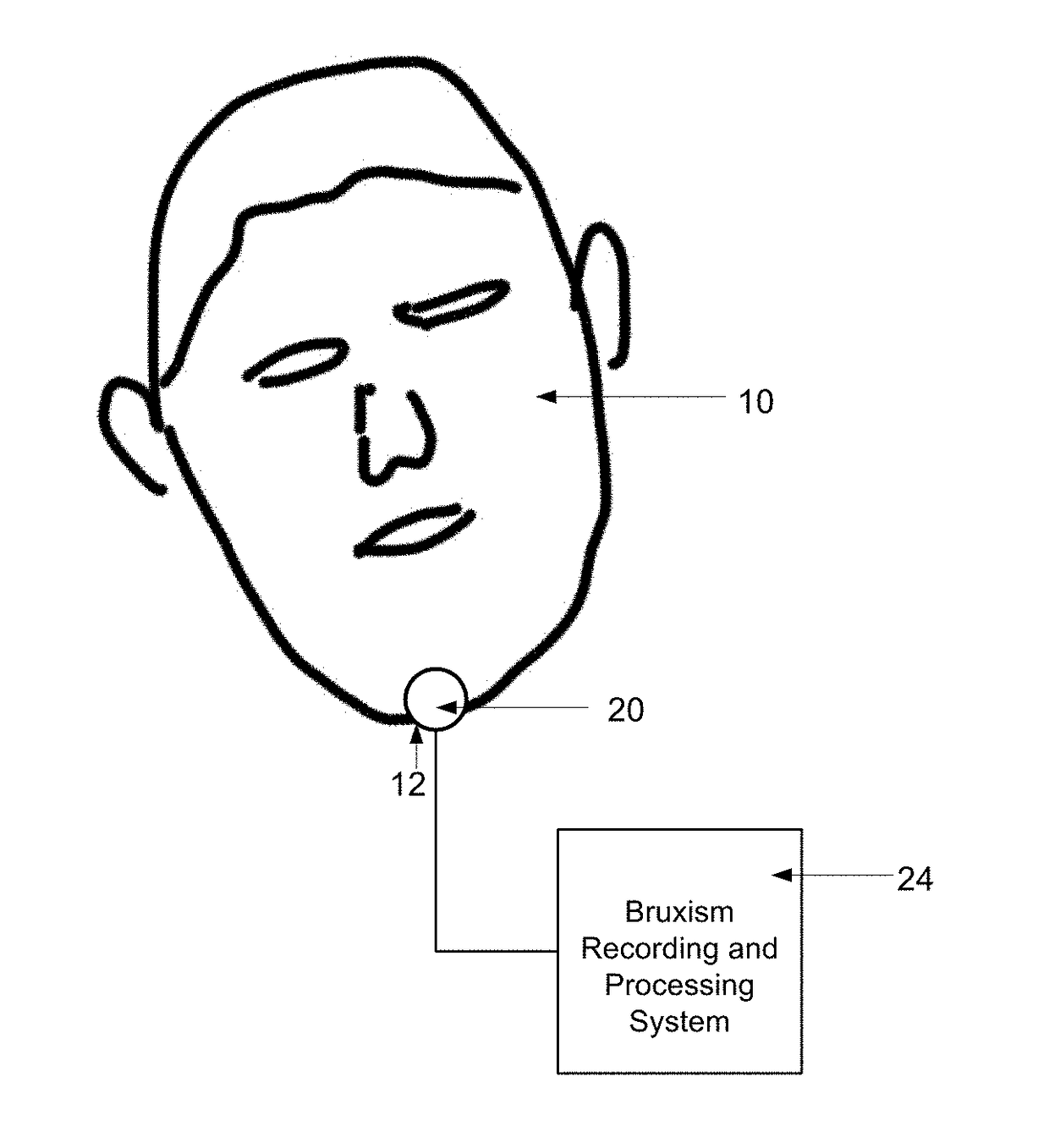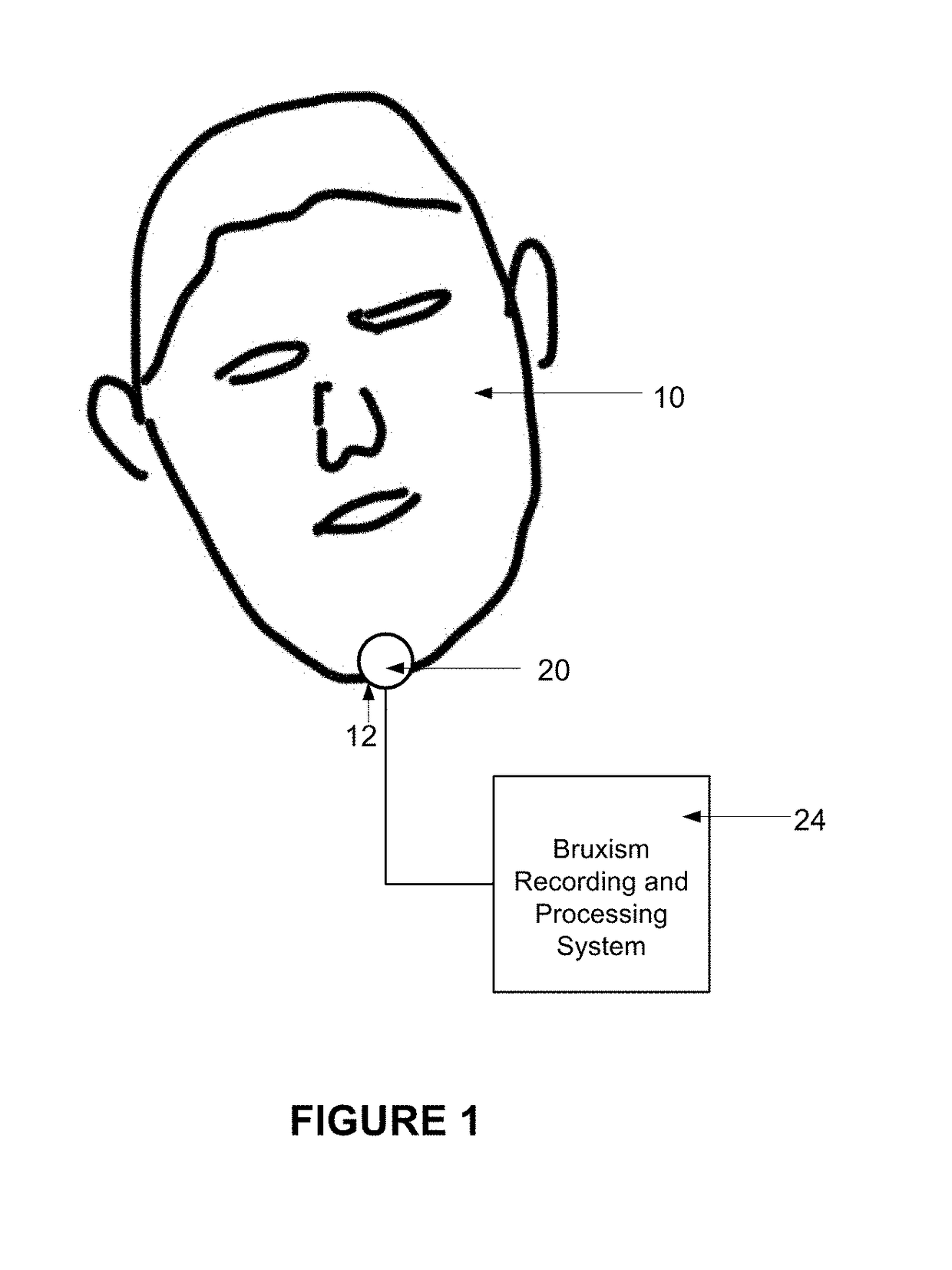Bruxism Detection System With Chin-Mounted Accelerometer Sensor
a technology of accelerometer and chin, which is applied in the field of bruxism detection system, can solve the problems of excessive wear and tear of teeth, eroded dentin, worn enamel, etc., and achieves significant flexibility in operational implementation, limit energy/battery requirements, and limit module energy/battery use.
- Summary
- Abstract
- Description
- Claims
- Application Information
AI Technical Summary
Benefits of technology
Problems solved by technology
Method used
Image
Examples
Embodiment Construction
)
[0024]The disclosed bruxism detection system uses an accelerometer sensor that is adapted to be detachably mounted relative to an individual's chin to sense and collect motion data in three axes, i.e., the x-axis, the y-axis and the z-axis. The motion data is initially stored on local hardware associated with the module that contains the acceleration sensor. Since an individual's chin has the maximum mandibular acceleration during episodes of teeth grinding or teeth clenching, the best mounting position for accelerometer sensor is the chin.
[0025]With reference to FIG. 1 which schematically depicts an individual's face 10, a module 20 is detachably mounted with respect to chin 12 of the individual's face 10. Module 20 contains, inter alia, an acceleration sensor 22 that is adapted to sense motion in three axes, i.e., the x-axis, the y-axis and the z-axis. Mounting of module 20 relative to chin 12 is generally accomplished with an anti-allergy material, such as hospital-grade cloth t...
PUM
 Login to View More
Login to View More Abstract
Description
Claims
Application Information
 Login to View More
Login to View More - R&D
- Intellectual Property
- Life Sciences
- Materials
- Tech Scout
- Unparalleled Data Quality
- Higher Quality Content
- 60% Fewer Hallucinations
Browse by: Latest US Patents, China's latest patents, Technical Efficacy Thesaurus, Application Domain, Technology Topic, Popular Technical Reports.
© 2025 PatSnap. All rights reserved.Legal|Privacy policy|Modern Slavery Act Transparency Statement|Sitemap|About US| Contact US: help@patsnap.com



